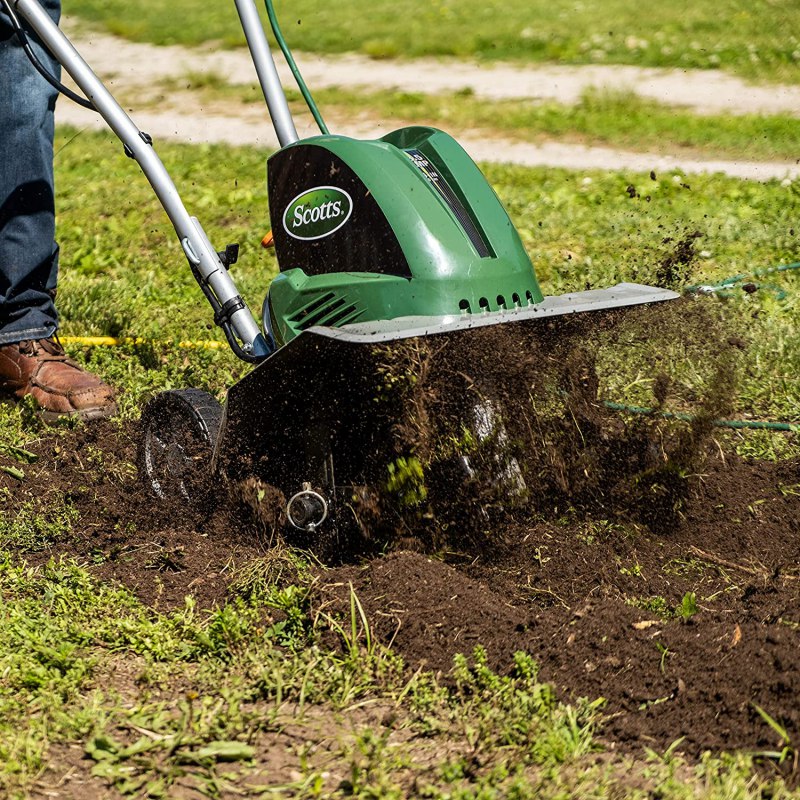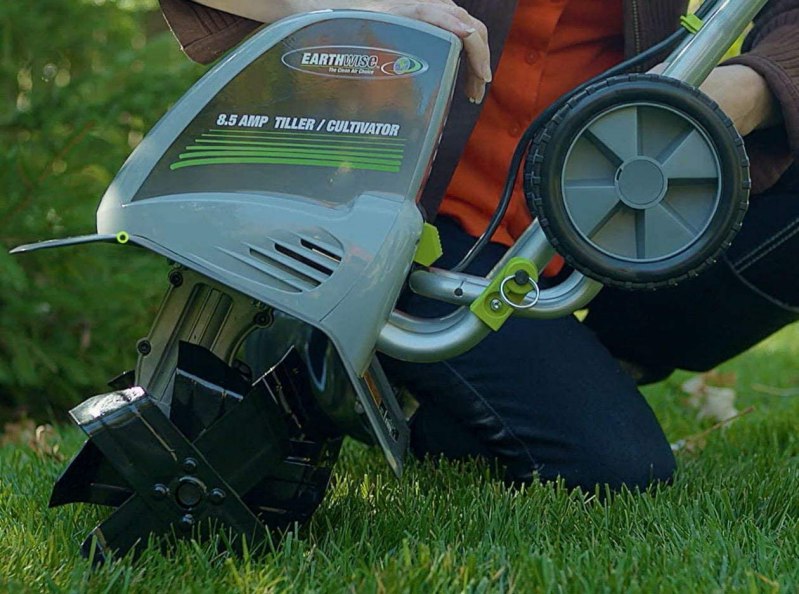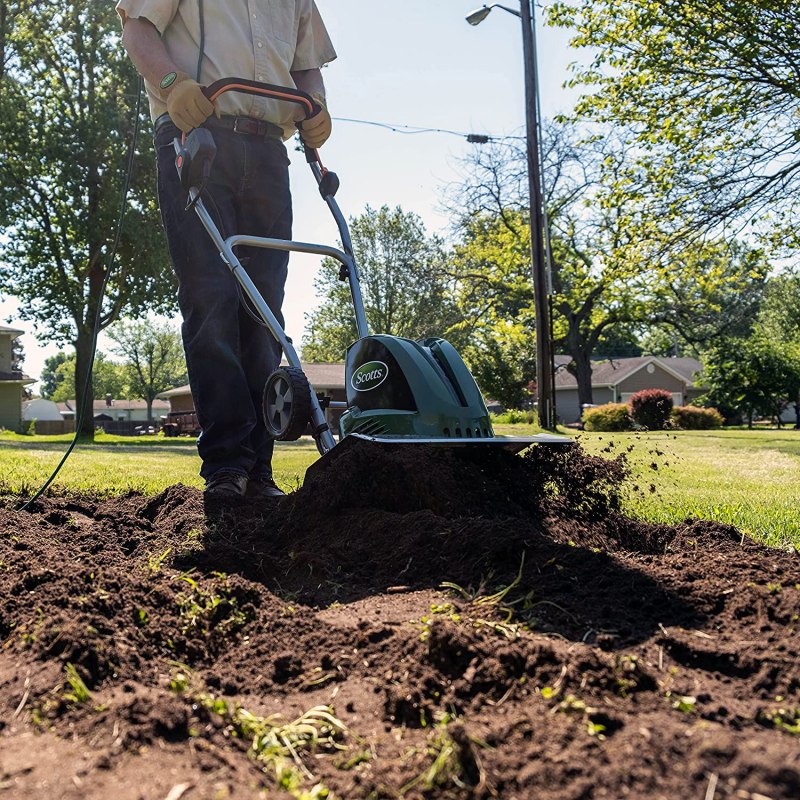Is your field’s soil clumsy? You want to sow the seeds, but it’s difficult in non-porous soil. You want to get rid of weeds in the soil. If you answered yes to the above questions, you will need to perform tillage operations, which will necessitate the use of a tiller. Excessive weeds and clumsy soil, on the other hand, are one of the causes of several quintals of crop loss; additionally, many farmers do not make the soil perfectly tilth. This problem, however, can be solved if the soil is perfectly tilted with the right tiller. As a result, in this article, we will go over everything there is to know about tillers, including what they are, how they are used in agriculture, and the benefits of using them.
So, without further ado, let’s get to the article and learn everything there is to know about Tillers.
What is Tilling?
Before learning about tillers, their different types, and their benefits, it’s important to understand the importance of tiling and tilth soil in agriculture and how it affects crops.

Tiling is a type of tillage operation in which you prepare your soil for seeding by preparing it to various standards. Tillage is an important process for preparing the soil for seeding and irrigation. It is the initial stage of crop planting. However, the first step in tillage is soil tilting. There are several advantages to tilting the soil, including It improves aeration and removing clumsy soil, pebbles, and stones.
Now, let’s return to the tiller and learn about its different types, benefits, and when to use it to tilt the soil.
What is a tiller?
A tiller is a tool used primarily in agriculture to prepare the soil for cultivating and planting. A tiller’s main function is to break up the soil, mulch organic debris, and incorporate organic matter and fertilizer into existing soil. A tiller, for example, is a farmer who uses a plow to turn over the soil in their field.
Though there are several methods for performing soil tilting, using tillers is far more practical and dependable. Farmers with little prior knowledge can easily handle it. Tillers make it simple to create viable conditions for your plants to thrive by homogeneously mixing nutrients.
Benefits of using a tiller
Now, let’s go over some of the advantages of using a tiller in your soil so you will have a better idea of whether your soil needs tilling or not.
Tilling is one of the most important agricultural processes, and it has many advantages that improve soil cultivation, such as soil aeration and tilth. Power Tillers must be extremely useful to farmers in hilly areas where only terrace farming is possible. As a result, it is also a good choice for uphill terrain.

Tillers loosen the soil- One of the most significant benefits of using Tillers in the soil is that it loses soil and breaks up soil clods. It increases the surface area of the soil and aids in seeding in the field which makes it easier for you to do the plantation. After seeding the soil, the loosened-up soil will help you make sure that whatever plant you want to grow, grows perfectly healthy and gets the nutrition it is supposed to get.
Seedbed preparation
Tillers play an important role in seedbed preparation, which is a major step in agriculture. Rotary tillers are used to prepare seedbeds in both dry and wetland conditions. Like we learned, it loosens the soil and makes sure that it is ready for the seeds to be planted. Large rotary tillers also help you make sure that whatever you are planting is in a perfect verticle state so that the roots of the plants don’t mix up. Tillers can also be used to incorporate straw and green manure.
Turning the soil
Soil turning is an important process in tillage because it helps to mix nutrients in the soil. Plants must be provided with adequate nutrients in order to achieve optimal crop density. However, when we apply nutrients to the soil, they do not spread uniformly, and this is where soil turning, which is typically performed by Tillers, comes into play.
Aeration in soil
A sufficient supply of oxygen is required for optimal crop growth. And, with the help of Tillers, you can easily make the soil porous, resulting in a high level of oxygen in the soil. This is one of the main reasons that almost all gardeners or farmers prefer to have their soil tilled so that it has enough oxygen level for the plants to thrive. Let us not forget that the aeration in the soil also helps in making sure that the plant does not die.
Types of tillers
After looking into the different benefits of using the tiller and how it is beneficial for your soil, let us have a quick look at different types of tillers you can get for the same.
This Post Contents
1. Manual Tillers
This is one of the classic tillers that you can get if you have a small area of soil to work with. Manual tillers are something that requires you to use them with your hands, that is one of the reason they are also called hand tillers. You can easily put in the spikes in the soil and push it further into the soil, turn it and pull it back. Although it requires some hard work, It is useful if you have a small garden soil to deal with. Other than that, you do not have to band down while working with this tiller.
You can mostly use this tiller for mixing fertilisers, loosening the first layer of the soil before you plant the seeds, and it is also one of the useful types of tillers you can use to dug out the weeds from the soil.
2. Front tine tillers
Like its name suggests, this kind of tillers have tines at the front and they are quite easy to operate, because of the very same reason this is one of the most popular type of tillers among most of the gardeners. If you have ever seen the front-line tillers you will see that most of the tines are in front and there are wheels at the back making it easy to use.
Gardeners prefer to use this type of tillers before they do the plantation. The difference between manual tillers and this tillers is that they operate from gas or electricity, depending on the tillers that you get. If you have a large area of soil that you have to cover, this kind of tillers might be the right choice for you.
3. Middle tine tillers
Again, when it comes to middle-line tillers, the name speaks for its type. If you have a rocky soil which might cause the tiller to lose its balance, middle-tine tillers are a suitable choice for you. As the tines in this kind of tillers are in middle and there are wheels at the front and the back these kind of tillers are more stable on the soil while operating.
Because of the very same reason, these kind of tillers are little bit more costly compared to the other types of tillers but the performance you will get out of middle tine tillers are the best kind. Some of the gardeners also consider this kind of tiller in the category of front-line tillers.
4. Rear tine tillers
Rear tine tillers as its name suggests have tine on the back. These kinds of tillers are used by experienced gardeners as they require you to be careful. But if you have a soil that needs some extra hard work when it comes to softening it rear tine tillers are your go-to machine. They have heavy tires and because of the same reason they cut into the soil deeper and even better. It ensures that there is no dead soil, no weeds, or no uneven patches in your garden.
If you have large area of the soil to cover, you might want to get this kind of tiller as they are heavy duty and more suitable for you to work with when working with a large area. It is necessary to note that these kinds of tillers are more expensive and for the very same reason, they are mostly used by farmers or professionals.
What does a tiller do to the soil for your plants?
The primary function of a tiller is to break up and aerate the soil. It not only loosens but also aerates the soil. It is used for a variety of tasks such as weeding, hoeing, plowing, and crumbling, which prepares the soil for crumbling. Furthermore, it breaks up the soil, prevents weed growth, and improves soil oxidation and aeration. Tillers also have a significant impact on the needs of plant roots for strength and nutrients, and good tilth soil improves root attachment and nutrient-taking capability.
When should you use a tiller?
Tillers are used in agriculture for a variety of tasks such as breaking down soil mulches, blending organic fertilizers, and so on. Tillers can be used for a variety of tasks, including:
1. Preparing the soil for planting
Tillage is an important phenomenon in agriculture, and you can’t sow your crop unless you use it. As a result, in order to make your tilling easier and more effective, you must remove any plant or grass, stones, or pebbles from the soil.
The removal of old plants, weeds, and stones is important for growing new crops because it prevents plant growth.
2. Used in the Autumn and Spring season
Autumn and spring are the best seasons for tilling the soil because the soil is not as dry as in the summer and not as wet as in the rainy season. If you want to use tillers in your soil, make sure to do so during these seasons.
However, tillers should not be used in soggy soil because they can cause compact clouds in the soil.
3. To Incorporate organic matter
Tillers are the best option for incorporating organic matter into your soil if it still has some compacts in it. Because it can label the soil, it increases the soil’s absorption area. Furthermore, adding organic matter to tilled soil improves its nutrient richness.
4. To aerate the soil
If your soil is clumsy, it is likely that there is a lack of oxygen in the soil. As a result, it is critical that you mix oxygen into the soil, and Tillers serve this purpose.
5. Make soil fluffy
You can’t work in hard soil, so Tillers improve the tilth and fluffiness of the soil. It increases the number of pores in the soil and allows sunlight to penetrate deeper into the soil.
Factors to consider while buying a tiller
In general, before you purchase any products you are supposed to ensure that you are getting the best of what you are supposed to get, and in addition to all of that, you also have to ensure that you consider all the factors regarding your needs and different product specifications before choosing perfectly suitable tiller for your garden.

But do not worry, we have made this article to make it easy for you to figure out how you can easily choose a tiller for you.
- Size of the area- Before you decide which tiller you can purchase, it is quite necessary to ensure the area that you will be using your tiller in. If it is a very small area, there is no point in purchasing a heavy-duty tiller that might not be as useful to you but on the other hand if you end up purchasing the wrong tiller you will be just wasting your money. You have to figure out the size of the area that you need to use tiller for. Once you know that, you can look into other factors affecting your purchase.
- Type of Soil- Well, thus has to be yet another important factor that affects the decision of which tiller to buy. For one thing, if you have a rocky soil you can never do well with handheld tillers, but if on the other hand, you purchase a tiller with rear tines, then you will get the best result out of it. You have to figure out what kind of soil you want to use the tiller for. If you have a hard dead soil, you will need to get a heavy-duty tiller but if you have a soft soil and you just need it for the first layer, almost any tiller would work for you.
- Preferred way of function- Now, you might what this have to do with the purchase of the tiller, but let me tell you, it has everything to do with it. there are gardeners who prefer to do. the all handwork by themselves and who would rather not use any engine-operated tiller and there are those who wants to get the work done as soon as possible. As there are tillers that functions manually, with gas and with battery, you will have to figure out your preferred way of function for tilling the soil of your yard or garden.
- Maintenance– You will have to check for the maintenance needs of the tiller and if you do not have time to maintain a tiller you should always opt for the one that doesn’t require much maintenance.
- Wheels- When it comes to the tillers, wheels are one of the essential part of it as they make it easier for you to glide down the soil. Because of the same reason you have to check for the wheels of the tiller. Larger wheels are easier to glide down on a rocky and uneven soil, smaller wheelers are better for even soil.
- Adjustable tilling depth and width- It is always very much beneficial to have a tiller that has adjustable tines. You might wonder why would you need a tiller like that. Let us tell you why, your soil might require a different kind of tilling depth to ensure that you are getting to the needed depth of the dead soil to revive it again. If you have a tiller with adjustable width and depth, you will be getting the best out of your tiller.
- Type of tillers- You have to choose the type of tiller that you are planning to get, some of the main type of tillers we have seen above and among them there are different types based on how the tiller operates. You have to choose whether you want a tiller which is corded, gas-operated, electrically operated or used manually. This decision may depend on the other factors affecting the need of purchase.
Based on these factors you can easily figure out which tiller will be the perfect choice for you and you can easily decide to get it without even a second’s thought. A correct choice of the tiller will make your soil better than you can ever expect it to be.
Conclusion
Now, you should have answers to all of your questions about tillers and how they are used in agriculture. As previously stated, its significance, benefits, and when it is required in agriculture are all discussed. Furthermore, soil tilting is an important step in agriculture because it affects the soil’s oxygen flow and nutrient content. As a result, you should have a thorough understanding of Tillers, including their various types, benefits, and other features. Now, if you enjoyed the article and it provided you with comprehensive information about tiller, please share it with those who are in need.